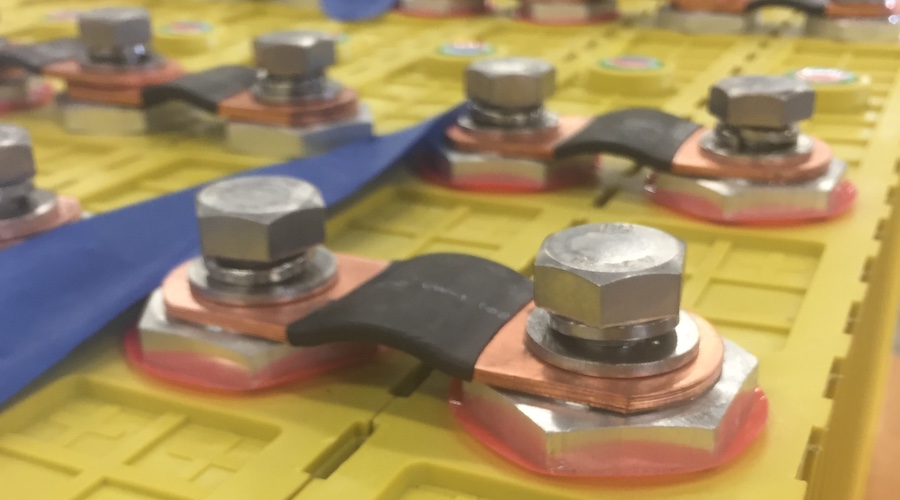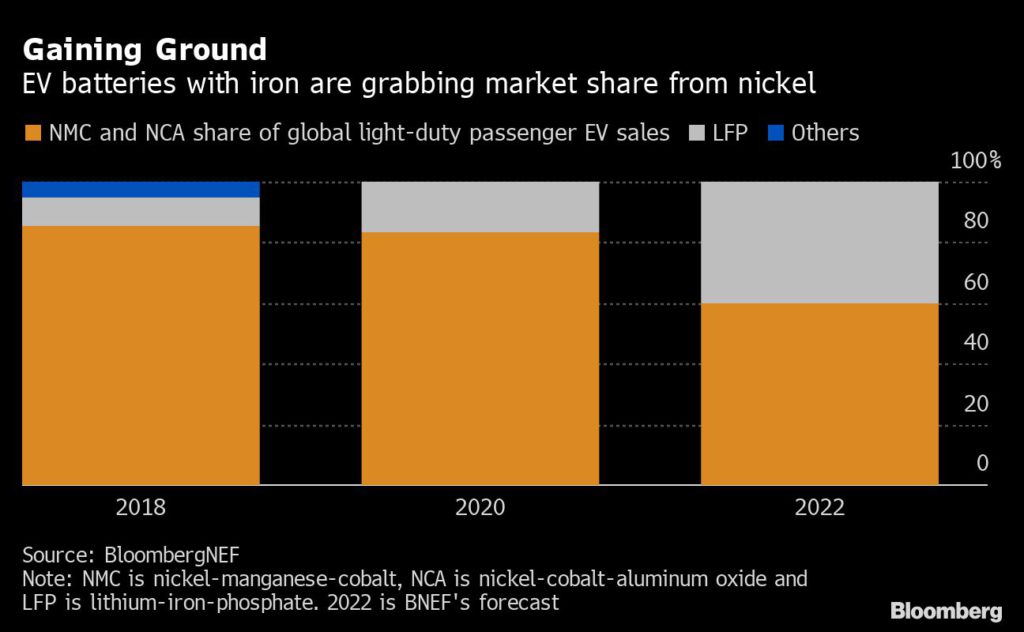
Japan’s Sumitomo Metal Mining Co. wants to start making materials for a cheaper type of electric-vehicle battery — containing no nickel — that’s poised for global popularity after storming the world’s top EV market, China.
Iron-based batteries known as LFP have rapidly expanded their role in China as a lower-cost rival to varieties with nickel, especially in smaller and low-range vehicles. They could grab more than half of the global battery market this decade, according to Katsuya Tanaka, an executive officer at Sumitomo, which already makes nickel-bearing materials for Tesla Inc. and Toyota Motor Corp. cars.
“Carmakers won’t be able to procure enough batteries if only sticking to nickel-based types,” Tanaka, who heads the firm’s battery materials division, said in recent interview. “We will expand our line-up to meet customers’ need as we expect the market will be polarized into the two.”

Sumitomo already specializes in certain types of nickel-based battery cathodes. Earlier this year it bought LFP capacity geared for non-auto applications, and is studying how to convert that technology for vehicles. LFP is shorthand for lithium-iron-phosphate.
The move highlights how EV supply chains are still in their infancy, as the industry grapples with everything from technological changes to geopolitical shifts. Western nations are trying to reduce their reliance on China, which has a stranglehold over most of production, including LFP cathodes.
Tesla uses LFP for its standard-range Model 3 and Model Y cars produced in China, which are exported globally. Volkswagen AG and Ford Motor Co. are among auto giants that have pledged to use the formula in future, while BloombergNEF predicts a shortage of LFP capacity in the US a decade from now.
Tanaka said LFP varieties might be well-suited to Japan’s popular mini-vehicles known locally as “kei”.
The small and affordable kei are especially popular outside major cities, where roads are narrow and public transportation is sparse. Last year the kei made up more than a third of new passenger-car registrations in Japan.
Drivers of battery-powered kei should get enough power by charging their cars at home — without going to EV charging stations — because they don’t typically use their cars much each day, Takana said.
Tanaka said Sumitomo will talk with one of its battery-manufacturing customers about supplying LFP cathodes. His firm could build a new plant in Japan or utilize a manufacturing site it has acquired in Vietnam, he said.
Sumitomo plans to triple output of battery materials to 15,000 tons a month by 2030 to tap into growing demand for EVs. That volume could be bigger if LFP materials will be included, Tanaka said.
(By Masumi Suga)
Comments